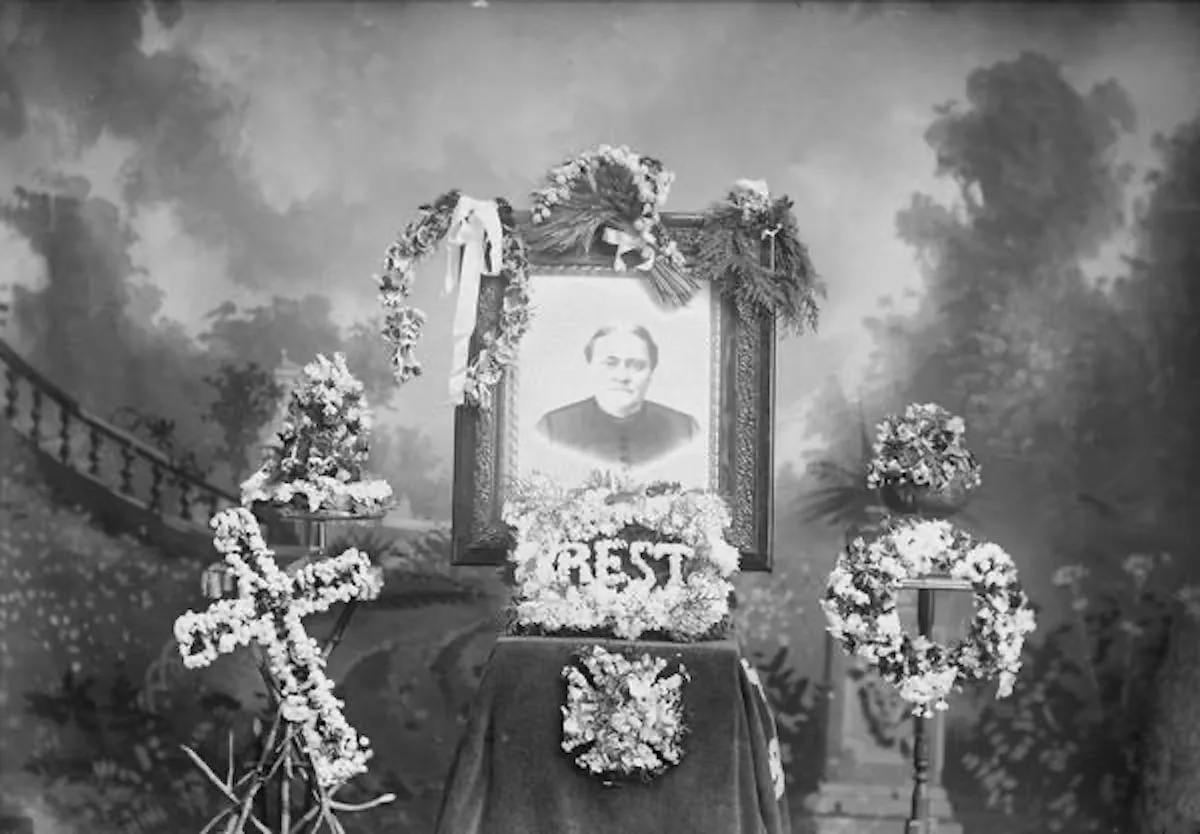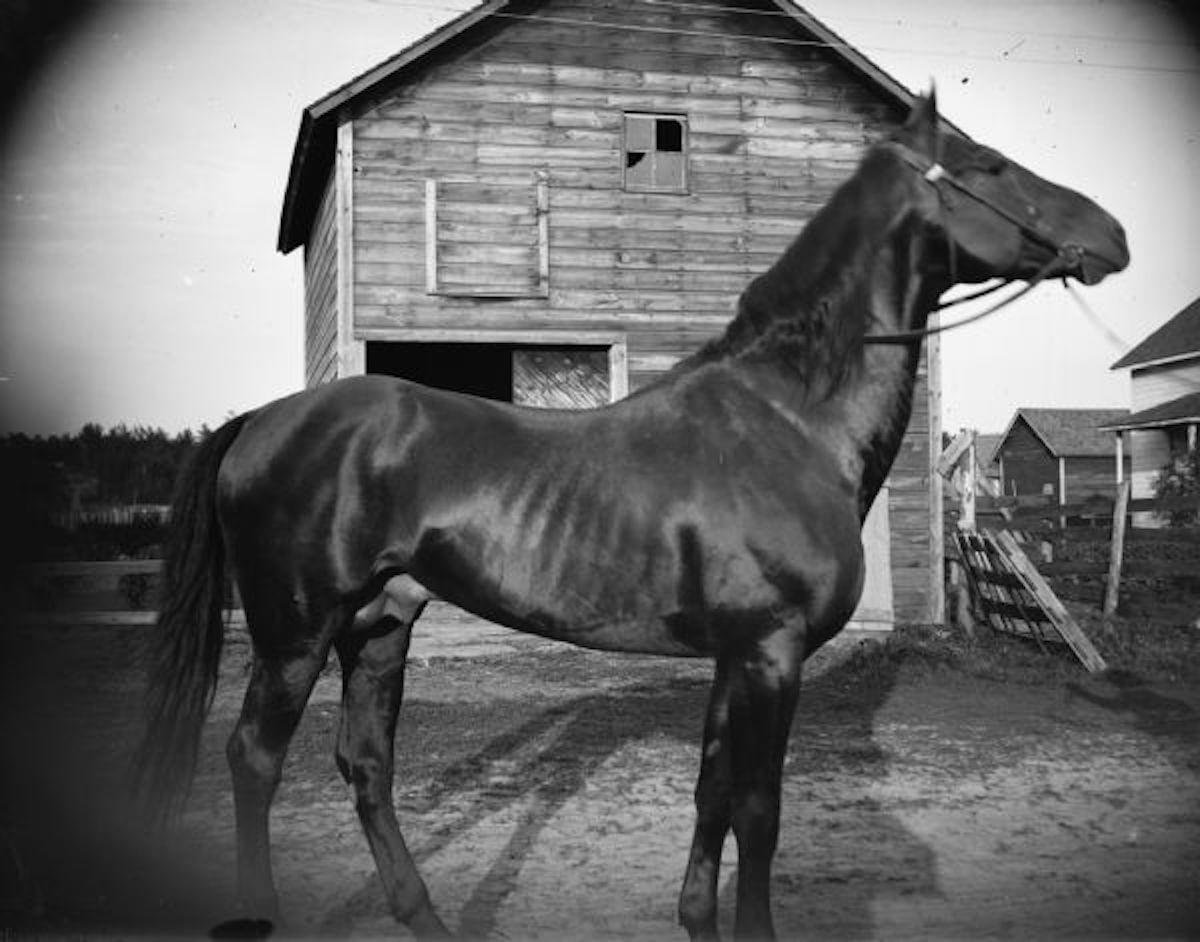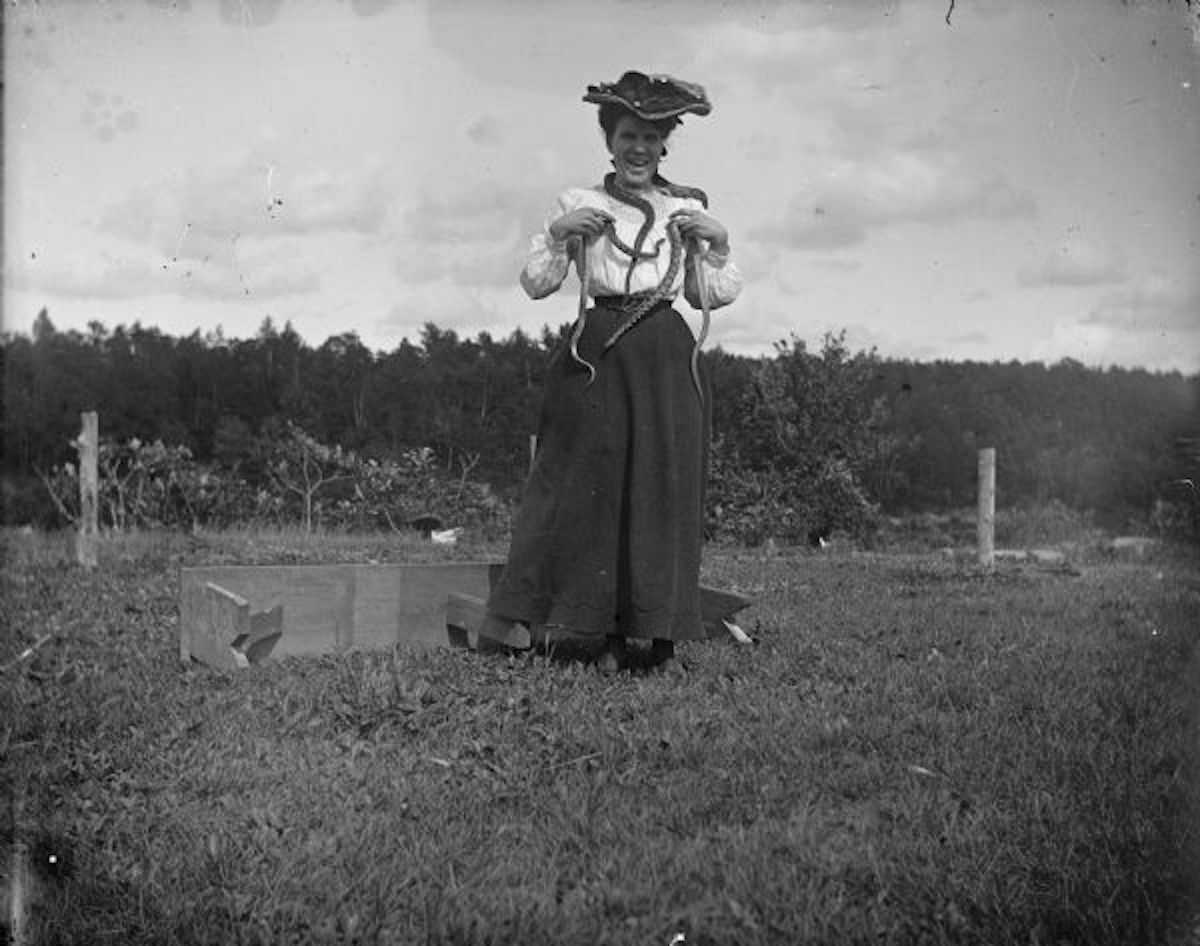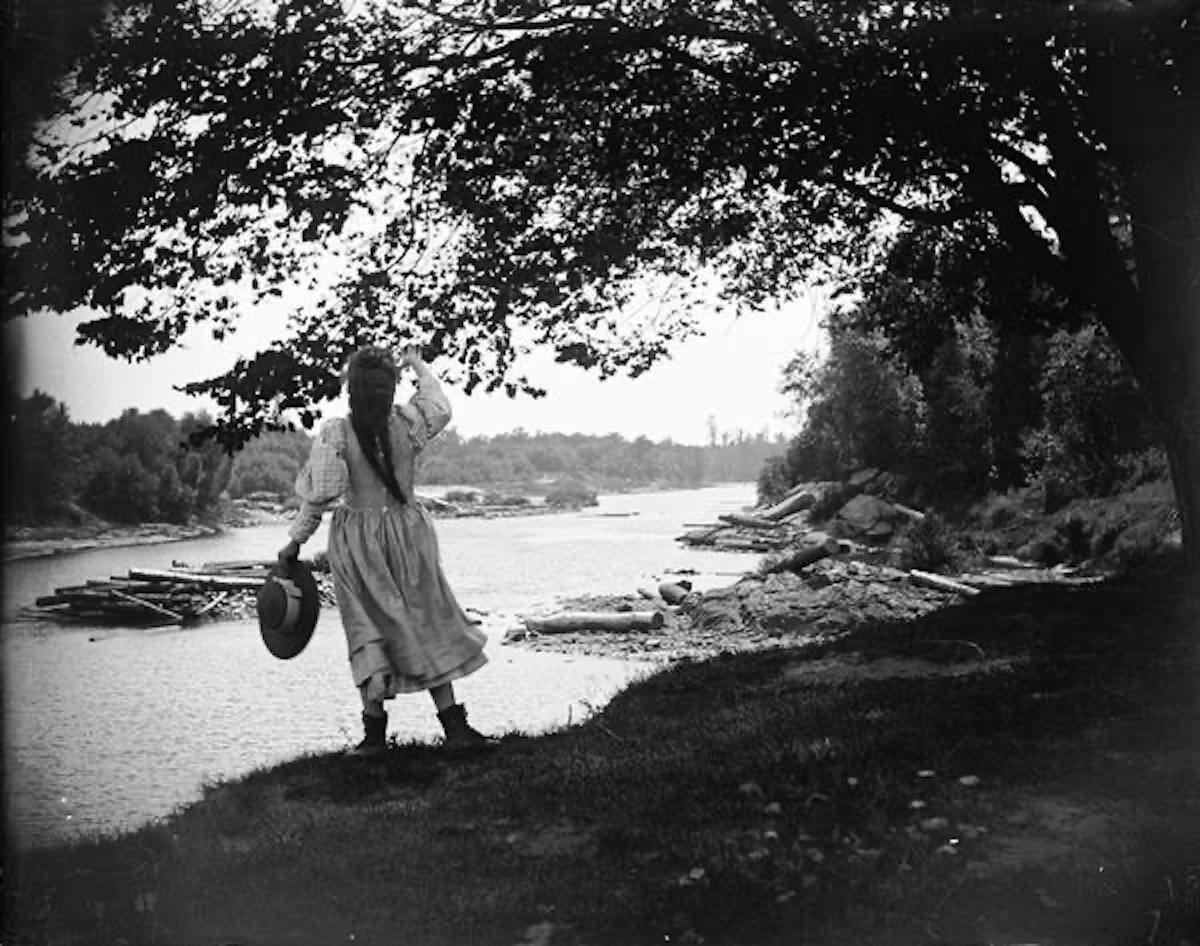
#image_title
#image_title
The unsettling chronicle of 1890s small-town life is still in print and inspiring artists 48 years after it was first published.
In 1973, a book appeared with the intriguing title of “Wisconsin Death Trip,” a crazed-looking woman staring glassy-eyed from the cover.
The book read like a history thesis on acid. Historian Micheal Lesy used photos from 1890s Black River Falls and juxtaposed them with newspaper stories from the era and records from the state insane asylum to paint a picture of the “psychic crisis” that gripped small-town America during the 1890s depression.
Photos of Dead Babies and Fantastical Beasts
The photos in the book were taken by Charles Van Schaick, a portrait photographer who had a studio in Black River Falls from 1885 to 1940.
He took portraits of matrons and memorial portraits of dead babies displayed at their funerals. He also took candid shots of what he saw on the streets. His photos of a white horse with a mane that reaches the ground and a black horse that looks half starved are weirdly arresting.
He documented lumber camps and tinker trucks coming through town. Van Schaick did so many portraits of local members of the Ho-Chunk Nation that they led to a 2011 book, “People of the Big Voice.”

From Doctoral Dissertation to Cult Classic
The Wisconsin Historical Society owns more than 8,000 of Van Schaick’s glass negatives. Lesy discovered the collection when he was a college student in Madison, and later, as a graduate student at Rutgers University, did his doctoral thesis on Van Schaick.
For his book, he used 130 images from the 1890s, often cropping or inverting them and presenting them with no identification or context. The historical society notes that “historians continue to be appalled at this approach, but the general public continues to be intrigued and fascinated.”
Book Is Narrated by Newspaper Clippings From the Day
Lesy used news articles from the Badger State Banner to set the scene, stories written by local editor Frank Cooper about epidemics, fires, bank failures, mill closings, and the human suffering that followed.
Readers learn that “Poverty and no work caused August Schultz of Appleton to shoot himself in the head while sitting in his little home with his wife and 5 children.” Or that “Mamie Weeks, a 15-year-old-girl at Beaver, has made complaint against her father Jacob Weeks of being the father of her unborn child. Weeks has disappeared.”
Or, “An attempt was made to assassinate W. L. Seymour, cashier of the defunct Seymour Bank of Chippewa Falls. One shot passed between his arm and body and the other went wide of the mark.”

Notes from the State Insane Asylum
Lesy used the records of the Mendota State Hospital to paint a picture of mental illness and despair. Asylum records note that a farmer from Cleveland was admitted because he “believes witches and bad people are around. Sees them every day. Has destroyed or starved several hundred dollars worth of cattle, claiming that witches were the cause.”
Another farmer, age 52 from Norway, was admitted because he was “deluded on the subject of religion. Is afraid of injury being done to him. Relations say he has tried to hang himself.” A woman, “Age 29, seven children … deranged in religion and afraid of everything, particularly of mediums.”
A newspaper article alerts that “Milo L. Nichols, sent to the insane hospital a year or two ago after committing arson … is now at large and was seen near the old place early last week … he has proven himself a revengeful firebug.”
Death Trip Inspires Musicians and Filmmakers
The dark poetry of Wisconsin Death Trip fascinated many who stumbled across it.
Author Robert Goolrick said it was the inspiration for his creepy Northwoods novel “A Reliable Wife,” and Stephen King has said it influenced his short story “1922.” The Bob Dylan movie “I’m Not There” used photos from the book, as did post-punk band Echo and the Bunnymen, in their album “Flowers.”
A band called Static-X titled an album “Wisconsin Death Trip,” and it inspired an opera, “Black River.”
In 1999, British filmmaker James Marsh directed a docudrama that reenacted some of the book’s newspaper stories and photos, with Madison-area actors playing roles such as “coffin girl,” “asylum guard,” and “hanging man.” The film is available on YouTube.

Politics

What’s the difference between Eric Hovde and Sen. Tammy Baldwin on the issues?
The Democratic incumbent will point to specific accomplishments while the Republican challenger will outline general concerns he would address....

Who Is Tammy Baldwin?
Getting to know the contenders for this November’s US Senate election. [Editor’s Note: Part of a series that profiles the candidates and issues in...
Local News

Stop and smell these native Wisconsin flowers this Earth Day
Spring has sprung — and here in Wisconsin, the signs are everywhere! From warmer weather and longer days to birds returning to your backyard trees....

Your guide to the 2024 Blue Ox Music Festival in Eau Claire
Eau Claire and art go hand in hand. The city is home to a multitude of sculptures, murals, and music events — including several annual showcases,...




